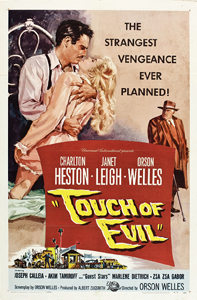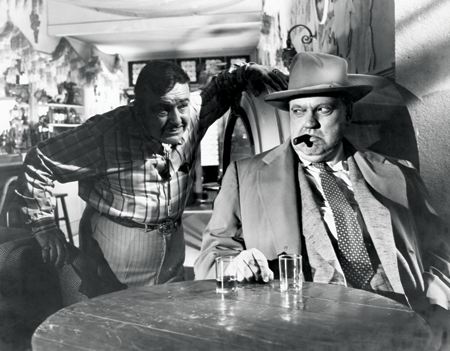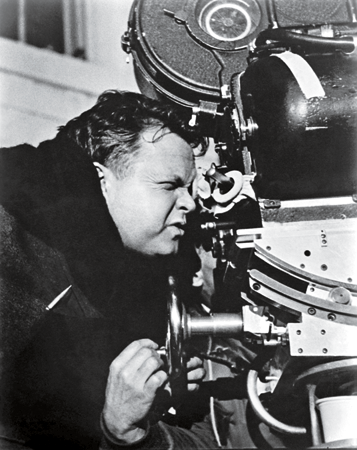
1958

EVERETT
Touch of Evil
DIR. ORSON WELLES

© UNIVERSAL PICTURES, COURTESY PHOTOFEST
Orson Welles’s corrupt police captain (right) confers with a Mexican crime boss (Akim Tamiroff) in the gleefully excessive Touch of Evil.
Quite possibly no director had a greater impact on film noir than the erratic genius Orson Welles. The distinctive high-contrast lighting of his first film, 1941’s classic Citizen Kane, helped define the genre’s look, and Welles later directed such full-blown noirs as Journey into Fear (1943) and The Lady from Shanghai (1947). He also had a pivotal part in 1949’s The Third Man. But his greatest work in the tradition is arguably 1958’s Touch of Evil.
Stark and delirious, the gothic thriller begins with a car bombing along the U.S.–Mexican border, which attracts the attention of Mike Vargas (Charlton Heston), a Mexican drug-enforcement official, and Hank Quinlan (Welles), a corrupt police captain. “It’s the sleaziest noir ride ever,” noir expert and novelist Jake Hinkson tells LIFE. “Welles wanted to push noir as far as it could go, and he comes pretty close to pushing it to the edge of insanity.” Called “film noir’s epitaph” by writer-director-critic Paul Schrader (screenwriter of Taxi Driver), the film basically marked the end of the genre’s classic era.
But Universal Studios hated the film and cut it to 93 minutes. That was the only version available until 1976, when the studio released a longer version that had been found in the archives. Though Welles was alive at the time, he was never consulted about the rerelease, and it wasn’t until 1998 that the extended cut was restored to what he might have intended, following the meticulous directions he had outlined in a memo to Universal. “Seeing it pure was wonderful,” said the film’s costar Janet Leigh, who cried during a screening. “I was so thrilled that this genius is going to have a chance to show itself again.”
“Your future is all used up,” the fortune-teller Tana (Marlene Dietrich) tells Hank toward the end of the film. Touch of Evil was Welles’s last Hollywood effort as a director, though he continued to act there. Considered “unbankable” stateside, he decamped to Europe to write and direct his own films. Though he made successful adaptations of Shakespeare (Othello and the acclaimed Chimes at Midnight), financing was a perennial struggle and many projects remained unfinished. He took commercial work, using his gravitas and arresting baritone to sell supermarket wine and frozen food. He was also a frequent talk-show guest. Hours after taping his last appearance—on The Merv Griffin Show in 1985—Welles died, hunched over a typewriter, his future all used up.

EVERETT
Welles behind the camera on the set of his Hollywood swan song.

EVERETT
The film’s strip club, run by a character played, in a brief cameo, by Zsa Zsa Gabor.